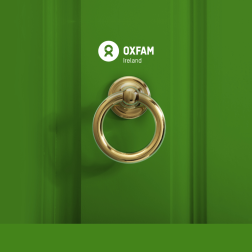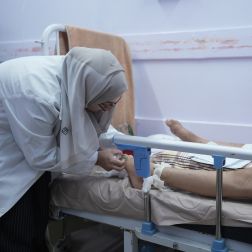- 4 mins read time
- Published: 23rd September 2020
The Carbon Inequality Era

In 1990, we entered a new global era.
From 1990 until 2015, as much carbon entered our atmosphere as had been emitted in all previous years in our history.
Our new report, Confronting Carbon Inequality, shows that responsibility for this rapid emissions rise is shockingly unequal. In this period, the richest 10 percent emitted the same amount of carbon as the rest of the world combined.
And the very richest one percent of people – the global elite – emitted double the amount of carbon as the poorest 50 percent of humanity.
This is the era of extreme carbon inequality.

Who are the richest 10 percent?
If your net income is over €32,500 annually, the chances are you’re one of the richest 10 percent of people in the world.
That 10 percent – around 630 million people at the time of the study – live in every continent, and there are wealthy communities in every country. A sizeable proportion of the population in North America and Europe sit comfortably in this demographic. By contrast, in most parts of Africa, Asia, and Latin America, the number of people on the global 10 percent rich list is tiny.
The emissions of the richest largely come from flying more, buying more polluting cars such as SUVs, and driving them further. These are often known as ‘lifestyle’ emissions.
Additionally, many of the emissions we all produce are ‘embedded’ – this means that they are happening because we live in a world that still relies on fossil fuels. In cooler climates, people need to heat their homes, for example, and gas is still the most accessible option. Many of us can make climate-conscious choices when it comes to the food we eat, the clothes and tech we buy – but all come with some carbon cost in this system.
So as well as individual action, we need radical, far-reaching change to the system if we are to truly confront carbon inequality.
Why now?
Time is short. There is a limit to the total amount of carbon that can be pumped into the atmosphere. Breaching this limit, the so-called ‘carbon budget’, will trigger runaway global warming, that we can no longer control or remedy. Think of it like filling a bath – there is still some space left before we reach the top, but if we don’t turn off the taps now, it’s going to overflow.
Over the last decades, this remaining ‘space’ in the atmosphere could have been used to lift all of humanity out of poverty, towards a decent standard of living. Adding some carbon emissions by connecting people to the electricity grid while we’re still transitioning to renewables, for example.
Instead, the carbon budget has been spent by the already-rich on luxury emissions. If we continue as we are, we will blow the carbon budget in the next 10 years. Carbon inequality is driving us towards climate catastrophe.

So, what do we do now?
Back to the bath analogy – just as every drop of water increases the risk of an overflow, every tonne of carbon moves us towards the climate brink.
But there is hope if we all play a role individually and collectively. COVID-19 showed us that huge changes are possible when necessary. Flights were grounded, new bike lanes appeared in cities, and working from home cut traffic congestion. Governments and businesses showed they can be radical when there is no other choice.
As we turn towards recovery from the pandemic, governments must act to cut the emissions of the richest and increase support to the poorest. The four ways to do this are:
- Tax the richest more, to help curb spiralling inequality.
- Introduce an added cost to luxury emissions such as private jets, SUVs or super yachts. Use the extra cash to fund universal social protection and healthcare.
- Invest more in low-carbon projects like public transport and energy efficiency, and guarantee decent jobs.
- Ban advertising in public spaces, especially for high-carbon luxury products.
Looking at the big picture, we must profoundly change the way we measure economic success. Let’s learn from the past decades and prioritise care, the sustainability of life, health and wellbeing, instead of pursuing endless economic growth.
2020 must mark the end of the carbon inequality era. How we shape the next decades, the post-COVID era, is up to us.




